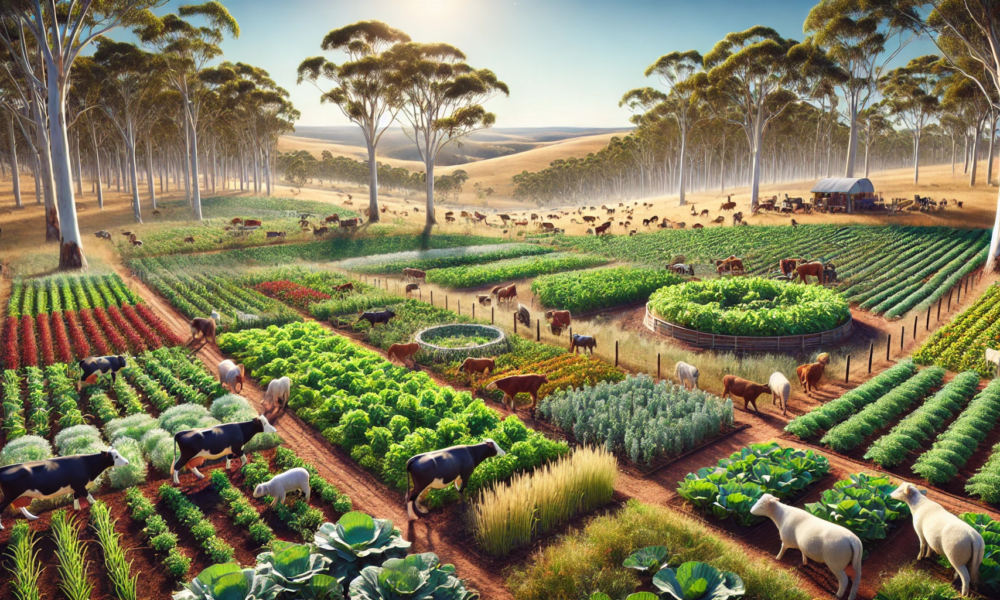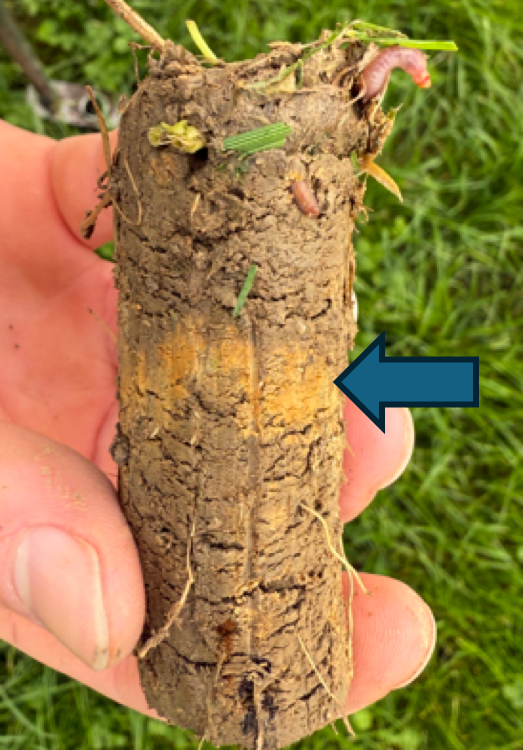Regenerative Farming 2

Independent Contributor
This article follows on from Regenerative Farming 1 where I attempt to get to the bottom of the new ‘trend’…..On-the-ground research so far tells me we are already regenerative farmers in good rainfall areas. There is certainly some good data around using legumes and multispecies, and many have converted to no or minimal tillage cropping alternatives.
Fertiliser programs nowadays normally keep farms using less than 200kg of nitrogen/ha/year and its common knowledge that maintaining your pH at 6-6.5 unlocks a lot of minerals already in the soil. At these levels I’m yet to see poor soil structure, some pugging with the 10cm soil plug below showing ‘mottling’ where an Iron pan can form after cropping or hoof pugging after extreme wet conditions, temporarily impeding roots going deeper, with good management and often mechanical aerating the soil does heal itself.
A quite different scenario in areas with rainfall below 600mm per year, where there are serious benefits in adopting logical regenerative techniques like shelter belts, legumes, and deep-rooted plant varieties. Swales and dams to enhance water retention are very logical. In most agricultural areas there isn’t a shortage of water but a shortage of storage – which is easily rectified with dams, unless you need a bloody permit … which is our nanny-state problem.
In all seriousness, ‘regenerative farming’ is actually a fake news example. Sure, there are variations in farming ability but if you have regular rainfall, a good pH, P-levels over 20 and sensible use of nitrogen, everything grows. A good tetraploid/diploid/clover/plantain and chicory mix growing 13-16t of drymatter is the perfect high protein and energy mix for a ruminant converting cellulose from pasture into the tasty proteins we are more addicted to than sex or alcohol.
Methane is a recyclable part of the process. Methane inhibitors are the biggest greenwashing joke of the century! It’s like us humans living on junk food and adding health supplements…..a balanced diet for cows or us a logical solution! Cows have 4 stomachs so that they can break down cellulose in grass, the variation in diet between regions and across seasons combined with management mean the only place inhibitors could consistently work is feedlots with minimal variables…..and what do the earth saving greenies think of them?
We can reduce our reliance on fossil fuels but carbon credits for pine trees (on good land), soil carbon and savannah burning are a joke for carbon offsetting. Regenerative farming and restoring the ‘small water cycle’ in developing nations, generally around the equator is the logical place to spend global money reversing desertification and human-induced soil erosion.
The $600 billion the Australian government is spending on solar, wind and possibly nuclear would have 10 times the carbon offsetting effect long term if it was spent regenerating human-induced desertification in Australia and globally.
Regenerative Farming 3 is still to come as my homework from Regen 1 is a work in progress. I honestly want to see a realistic scenario where a regenerative dairy farm genuinely produces milk at a similar production per hectare as us conventional farmers who I say are already regenerative!

